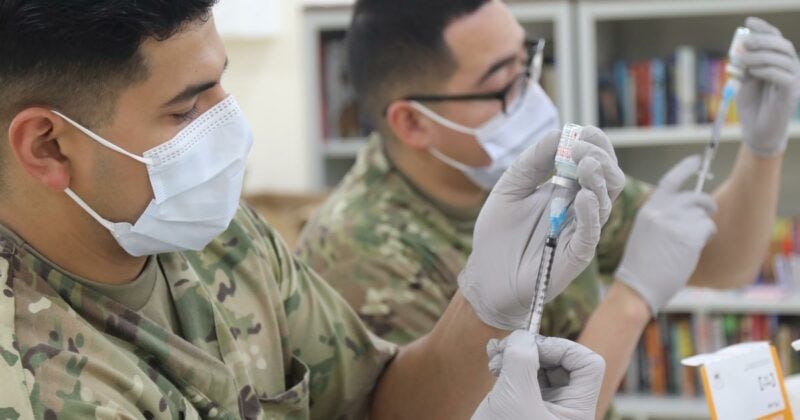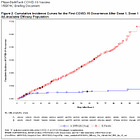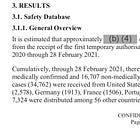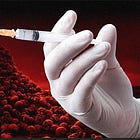Bombshell: COVID Vaccine Trials Were RIGGED To Make the Injections Appear “Safe and Effective.”
A leading expert has spoken out to warn the public about Covid mRNA shots after discovering that the medical trials for the vaccines were rigged to make the injections appear “safe and effective.”
One-time or recurring donations can be made through Ko-Fi:
By Frank Bergman March 14, 2024
A leading expert has spoken out to warn the public about Covid mRNA shots after discovering that the medical trials for the vaccines were rigged to make the injections appear “safe and effective.”
The bombshell was revealed by Raphel Lataster, Ph.D., a renowned researcher and former pharmacist affiliated with the University of Sydney, Australia.
Lataster summarized four studies suggesting that the promise of “safe and effective” COVID-19 immunizations was “exaggerated in clinical trials and observational studies.”
He outlined his arguments on Substack, basing his conclusions on four papers:
A March 2023 paper by lead author Peter Doshi, Ph.D., describing the “case-counting window” bias and its possible effect on COVID-19 vaccine effectiveness reporting.
Lataster’s July 2023 response to Doshi’s paper, concluding the same type of bias affected safety reporting.
A July 2023 response by Doshi explaining how case-counting window biases were used to game the Pfizer and Moderna vaccine clinical trials.
Lataster’s own January 2024 paper, which discussed rampant biases in the trials in light of more recent data on myocarditis, a now-recognized side effect of the shots.
The study at the heart of Lataster’s analysis addressed the biases that caused health officials and the media to claim the injections were “safe and effective” for public use.
Three types of bias may have contributed to the vaccines’ initial stellar reviews: background infection rate bias, age bias, and case-counting window bias.
“Background infection rate bias” arises when study groups have inherently different exposure levels.
An extreme example of this would be a study on COVID-19 infections that compares people who were strictly isolated in their homes early on in the pandemic to doctors who saw multiple Covid patients per day during the same period.
Infection rate bias can make even a worthless vaccine appear highly effective.
Based on how most studies calculate vaccine effectiveness, Lataster estimates that even a dummy shot could be made to appear 67% effective.
In this study, Doshi also mentioned age-related biases and difficulties in eliminating them.
“Age is perhaps the most influential risk factor in medicine, affecting nearly every health outcome,” he wrote.
Investigators try to eliminate age bias whenever they can.
However, the task is easier in theory than in practice.
In early 2021, when vaccine uptake was robust but limited to the elderly, vaccinated people, as a group, were much older than the unvaccinated.
At the time, they were experiencing just half the younger generation’s infection rate.
Due to this imbalance, the vaccines appeared more effective at preventing infection than they were.
Again, on this basis alone, Doshi calculated the presumed effectiveness of a dummy shot at 51%.
He suggested applying this percentage as a correction factor for future vaccine effectiveness claims.
However, the most impactful source of error was the “case-counting window bias.”
The pivotal COVID-19 vaccine trials used lab-confirmed, symptomatic COVID-19 infection as its primary endpoint.
Nevertheless, the trials did not begin counting cases until 7 or 14 days after the final series shot.
At this point, subjects were considered “fully vaccinated.”
According to Doshi, none of the vaccine manufacturers provided a rationale for excluding cases occurring before this point, which primarily affected safety reporting on adverse events.
Pfizer was the only exception.
The company, on page 15 of its adverse events report, justified the delay by stating that “the vaccine has not had sufficient time to stimulate the immune system.”
Lataster dubbed this explanation “bizarre” given that considerable time elapsed between the first shot and 7, 14 or 21 days after the last series shot.
During this period, plenty of side effects could have occurred.
Most side effects occur within the first several days after immunization.
“To make matters worse, the unvaccinated do not get such a ‘grace period’,” Lataster wrote.
In other words, vaccine companies were only counting cases, hospitalizations, and deaths among the unvaccinated.
Meanwhile, those same events among the vaccinated were ignored.
According to Doshi, this bias accounted for 48% of the claimed effectiveness of these products.
This number is higher than the admitted effectiveness of the shots after just a few months.
These three biases could have been minimized through randomized, placebo-controlled trials.
However, because all manufacturers allowed the placebo group to take the vaccine, “observational studies are all we have.”
In his July 2023 paper, Lataster suggested a fourth source of bias — definitional bias — that Doshi missed.
This issue led to people who had received Covid shots being listed as “unvaccinated.”
Definitional bias refers to categorizing people as “unvaccinated” if they received their last shot fewer than some arbitrarily selected number of days previously.
While pharmaceutical companies could argue for counting those subjects as “unvaccinated” for purposes of determining vaccine effectiveness, doing so makes no sense for safety monitoring.
“While it may in some circumstances be appropriate to monitor the effectiveness of the mRNA vaccines from the point that they are most effective … there is no sound rationale for this to apply to safety analyses,” according to Lataster.
The greatest danger from definitional bias is not that adverse events go uncounted, however.
The concern is that danger signals among the vaccinated, that occur before the counting window opens, are lumped in with those who received no shots.
Doshi’s and Lataster’s original papers referred to biases in observational studies.
However, as Doshi noted in his second paper, the same case-counting window biases also were prominent in the vaccines’ original, placebo-controlled COVID-19 vaccine trials.
For example, cases and adverse events occurring after vaccination but before the “window” opened were either uncounted or assigned to the unvaccinated group.
This resulted in the vaccine appearing to be safer and more effective than it was.
Lataster responded with yet another paper pointing out additional issues.
In one Pfizer study, there was a large number of patients “lost to follow-up” — subjects who because of ill health, severe vaccine reaction or some other reason did not stay in the study long enough to have their results counted.
Subjects lost to follow-up were numerous enough to have swayed results strongly in one direction or another.
There were also more than 3,000 cases of suspected but unconfirmed COVID-19 in the overall study population.
This number was split almost evenly between the treatment and placebo groups.
These cases, Lataster wrote, “would have drastically brought down treatment efficacy estimates.”
For example, based on five COVID-19 cases among the vaccinated and 95 cases among the unvaccinated, it could be argued that the vaccine was highly effective.
However, adding 1,000 COVID-19 cases to both groups, 1,005 cases versus 1,095 cases is far less impressive, according to Lataster.
“In this way, a product with less than 10% effectiveness can be made to look over 90% effective,” Lataster wrote,
“Anything can be claimed with manipulated data.”
Lataster’s second paper also raised additional safety and one effectiveness issue that Doshi missed in his original paper.
The safety signal is myocarditis, or heart muscle inflammation and damage.
Myocarditis has been a hot topic due to news reports of young, apparently healthy vaccinated individuals suddenly dropping dead.
The effectiveness issue involves negative effectiveness, the process by which a vaccine becomes less and less effective, to the point where vaccinated individuals are at greater risk for infection.
Lataster cited another study in the American Journal of Epidemiology which claimed:
“The benefits of mRNA COVID-19 vaccines in protecting against the omicron variant outweigh the risks, irrespective of age, sex, and comorbidity.”
According to Lataster, this paper demonstrates that any potential benefit to vaccination was minimal and that there may be “no net benefits, and possibly even net deficits,” to COVID-19 vaccination.
Source: slaynews.com
Related articles:














Of course they were rigged… Now, when are the arrests going to begin!? 🔥
I absolutely love your Substack, but...totally NOT a bombshell.